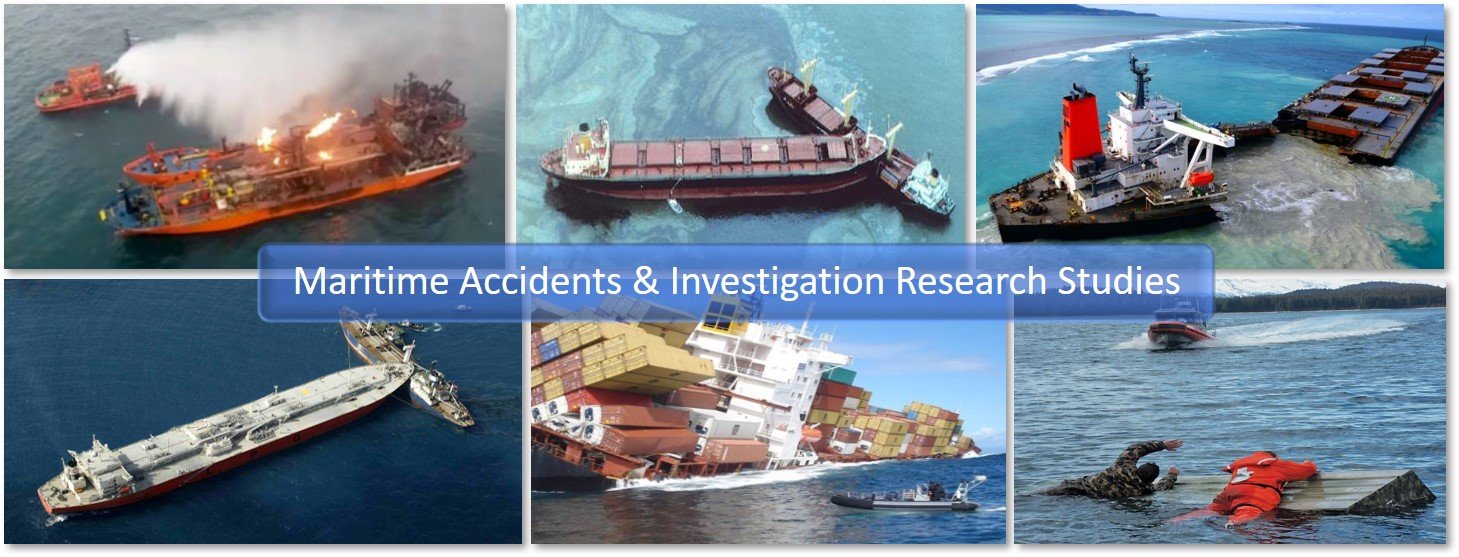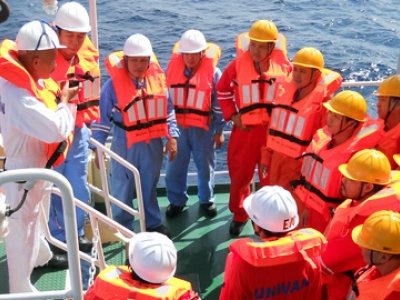Maritime accidents can have devastating consequences, ranging from loss of life and environmental damage to financial losses and legal ramifications. Understanding the different types of maritime accidents is crucial for mitigating risks, enhancing safety measures, and preventing future incidents. In this article, we’ll explore various types of maritime accidents, their causes, implications, and strategies for prevention.
Introduction to Maritime Accidents
Definition and Significance Maritime accidents encompass a wide range of incidents that occur at sea or on navigable waters, including collisions, fires, personnel accidents, environmental disasters, and more. These accidents pose significant risks to life, property, and the environment, highlighting the importance of effective safety measures and prevention strategies in the maritime industry.
Common Causes of Maritime Accidents Maritime accidents can be caused by a multitude of factors, including human error, equipment failures, adverse weather conditions, negligence, and lack of proper training or maintenance. Identifying and addressing these root causes is essential for preventing accidents and ensuring the safety of maritime operations.
Types of Vessel Collisions
Collisions with Other Vessels Collisions between vessels are among the most common types of maritime accidents, often resulting from navigational errors, miscommunication, or failure to yield right of way.
Collisions with Fixed Objects Vessels may collide with fixed objects such as piers, bridges, or offshore platforms due to poor visibility, equipment malfunctions, or errors in navigation.
Groundings Groundings occur when a vessel runs aground on underwater obstacles or shallow waters, typically due to errors in navigation, inaccurate charts, or mechanical failures.
Incidents Involving Fire and Explosions
Engine Room Fires Fires in the engine room can be caused by fuel leaks, electrical faults, or overheating machinery, posing serious risks to crew members and vessel integrity.
Cargo Fires Cargo fires may occur due to improper stowage, spontaneous combustion of hazardous materials, or chemical reactions, resulting in damage to cargo and vessel structures.
Explosions Onboard Explosions onboard vessels can result from fuel or gas leaks, ignition of flammable materials, or malfunctioning equipment, leading to injuries, fatalities, and extensive damage.
Personnel Accidents
Slip and Falls Slip and fall accidents are common onboard vessels, often caused by wet surfaces, inadequate lighting, or cluttered work areas, resulting in injuries to crew members.
Machinery Accidents Accidents involving machinery can occur due to improper operation, mechanical failures, or lack of maintenance, posing risks to crew safety and operational efficiency.
Man Overboard Incidents Man overboard incidents may result from crew members falling overboard due to rough seas, unstable surfaces, or lack of proper safety measures, requiring immediate rescue efforts to prevent fatalities.
Environmental Disasters
Oil Spills Oil spills can occur during vessel collisions, groundings, or equipment failures, posing severe threats to marine ecosystems, wildlife, and coastal communities.
Chemical Spills Chemical spills from vessels carrying hazardous materials can contaminate waterways, endangering marine life and human health, and requiring extensive cleanup efforts.
Marine Pollution Marine pollution from various sources, including vessel discharges, sewage, and littering, contributes to environmental degradation and ecosystem damage, necessitating measures to mitigate pollution and protect marine habitats.
Capsizing and Sinking
Stability Issues Capsizing and sinking incidents may occur due to stability issues caused by improper loading, shifting cargo, or adverse weather conditions, leading to loss of life and vessel losses.
Flooding Incidents Flooding onboard vessels can result from hull breaches, equipment failures, or severe weather conditions, requiring immediate action to prevent further water ingress and stabilize the vessel.
Structural Failures Structural failures, such as hull cracks or structural weaknesses, can compromise vessel integrity, leading to catastrophic events such as capsizing or sinking, highlighting the importance of regular inspections and maintenance.
Weather-Related Accidents
Storms and Rough Seas Severe weather conditions, including storms, high winds, and rough seas, pose significant risks to vessel navigation and safety, necessitating precautions and emergency response measures.
Heavy Fog Heavy fog can impair visibility and increase the risk of collisions and groundings, requiring vessels to use navigational aids and exercise caution when operating in foggy conditions.
Hurricane Impacts Hurricanes and tropical storms can cause widespread damage to vessels, ports, and coastal infrastructure, disrupting maritime operations and necessitating evacuation and emergency preparedness measures.
Human Error and Negligence
Navigation Mistakes Navigation errors, such as misjudging distances, incorrect course plotting, or failure to adhere to navigational rules, can lead to collisions, groundings, or other accidents.
Crew Fatigue Crew fatigue resulting from long hours of work, inadequate rest periods, or demanding schedules can impair judgment, coordination, and reaction times, increasing the likelihood of accidents.
Lack of Proper Training Inadequate training and lack of proficiency in vessel operations, safety procedures, and emergency response protocols can contribute to accidents and jeopardize the safety of crew members and vessels.
Equipment Failures and Malfunctions
Engine Failures Engine failures can occur due to mechanical breakdowns, fuel contamination, or lack of maintenance, resulting in loss of propulsion and potential safety hazards.
Steering System Malfunctions Malfunctions in the steering system, such as hydraulic failures or mechanical faults, can impair vessel maneuverability and navigation, posing risks of collisions or groundings.
Electrical Failures Electrical failures onboard vessels can disrupt critical systems, including navigation, communication, and safety equipment, compromising vessel operations and crew safety.
Legal Implications and Liability
International Maritime Law International maritime law governs liability and compensation for maritime accidents, providing frameworks for addressing legal issues, jurisdictional matters, and liability determinations.
Liability of Shipowners and Operators Shipowners and operators may be held liable for maritime accidents resulting from negligence, unseaworthiness, or failure to comply with safety regulations, with potential legal consequences and financial obligations.
Compensation for Victims Victims of maritime accidents, including crew members, passengers, and affected communities, may be entitled to compensation for injuries, loss of life, property damage, and environmental harm, under applicable legal regimes and insurance policies.
Prevention and Safety Measures
Training and Education Programs Training and education programs for crew members, officers, and maritime personnel are essential for promoting safety awareness, enhancing skills, and fostering a culture of safety onboard vessels.
Implementation of Safety Protocols The implementation of safety protocols, including risk assessments, emergency response plans, and safety drills, is critical for mitigating risks and responding effectively to accidents and emergencies.
Use of Advanced Technology Advanced technologies, such as electronic navigation systems, collision avoidance systems, and monitoring sensors, can enhance situational awareness, improve vessel safety, and prevent accidents.
Emergency Response and Salvage Operations
Search and Rescue Efforts Timely search and rescue efforts are essential for saving lives and minimizing casualties in maritime accidents, requiring coordination between maritime authorities, emergency responders, and neighboring vessels.
Salvage Operations Salvage operations involve the recovery of vessels, cargo, or wreckage from maritime accidents, requiring specialized equipment, expertise, and legal procedures to mitigate environmental risks and salvage valuable assets.
Environmental Cleanup Environmental cleanup efforts following maritime accidents, such as oil spills or chemical releases, require swift and coordinated response measures to contain pollutants, protect marine ecosystems, and minimize long-term environmental damage.
Industry Regulations and Compliance
International Maritime Regulations International conventions and regulations, such as SOLAS (Safety of Life at Sea) and MARPOL (International Convention for the Prevention of Pollution from Ships), establish standards and requirements for vessel safety, environmental protection, and operational practices.
National Regulatory Agencies National regulatory agencies, such as the U.S. Coast Guard in the United States, enforce maritime regulations, conduct inspections, and oversee compliance with safety, security, and environmental standards.
Classification Societies Classification societies, such as Lloyd’s Register and ABS (American Bureau of Shipping), provide certification and classification services to ensure vessels comply with technical standards, safety requirements, and quality assurance measures.
Impact on Maritime Industry
Disruption of Trade Routes Maritime accidents can disrupt trade routes, port operations, and supply chains, causing delays, congestion, and economic losses for shipping companies, manufacturers, and traders.
Financial Losses Financial losses resulting from maritime accidents include repair costs, insurance claims, legal expenses, and compensation payments, impacting the profitability and viability of affected vessels and businesses.
Reputational Damage Reputational damage from maritime accidents can tarnish the image and credibility of shipping companies, port operators, and maritime service providers, affecting customer trust, investor confidence, and stakeholder relations.
Conclusion
Maritime accidents pose significant risks to life, property, and the environment, underscoring the importance of effective safety measures, prevention strategies, and regulatory compliance in the maritime industry. By understanding the different types of maritime accidents, their causes, and implications, stakeholders can work together to enhance safety standards, mitigate risks, and ensure the sustainability of maritime operations for the future.
FAQs
1. What are the most common causes of maritime accidents? Common causes of maritime accidents include human error, equipment failures, adverse weather conditions, navigational mistakes, and lack of proper training or maintenance.
2. How can maritime accidents be prevented? Maritime accidents can be prevented through training and education programs, implementation of safety protocols, use of advanced technology, compliance with regulatory standards, and fostering a culture of safety onboard vessels.
3. What legal implications do maritime accidents have? Maritime accidents may have legal implications such as liability determinations, compensation claims, jurisdictional issues, regulatory enforcement actions, and compliance with international maritime law and conventions.
4. How are maritime accidents responded to and managed? Maritime accidents are responded to and managed through emergency response protocols, search and rescue efforts, salvage operations, environmental cleanup measures, legal proceedings, and coordination between maritime authorities and stakeholders.
5. What role do industry regulations play in preventing maritime accidents? Industry regulations establish standards and requirements for vessel safety, environmental protection, operational practices, and crew training, helping to prevent maritime accidents and ensure compliance with legal obligations and best practices.


